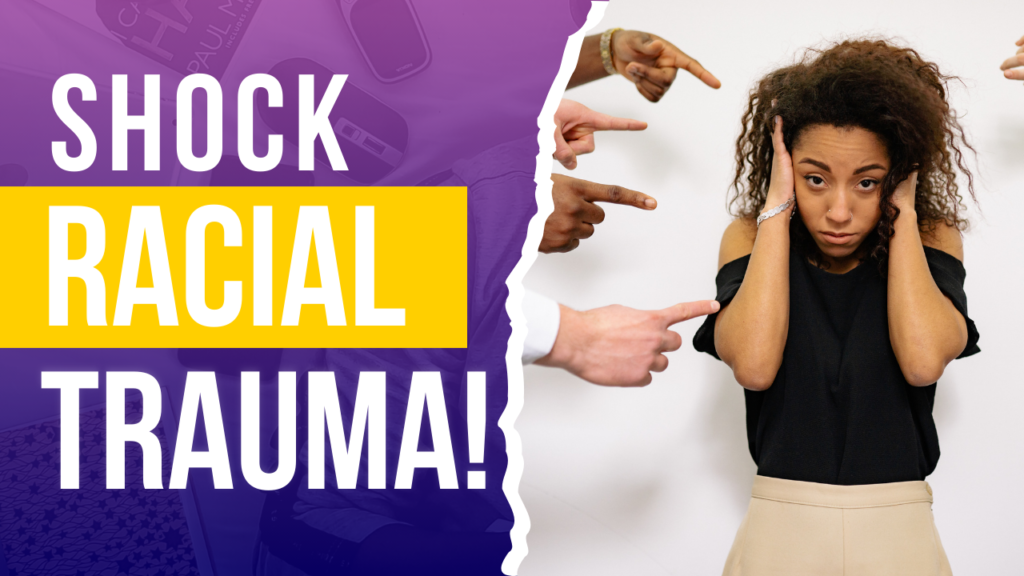
Powered By BlackTraumaGPT.com
Researched and Curated By Rev. Dr. Philippe SHOCK Matthews
(Black Trauma and Mental Health Specialist | Prompt Eng | GPT Dev | Research Scientist | Africana Phenomenologist | Black AI Corsortim co-Founder | Black Mental Health Podcast Host)
As we conclude our exploration of race technology, we turn our attention to the fourth and final component: spacing. As a research scientist in Africana phenomenology, I have observed how the control and manipulation of physical and social space has been a crucial tool in the maintenance of racial hierarchies and the perpetuation of systemic racism.
The technology of spacing encompasses a wide range of practices and policies that seek to separate, isolate, or concentrate racial groups in particular geographic or social locations. This technology has played a pivotal role in shaping the racial landscape of our society, from the macro level of urban planning and housing policy to the micro level of interpersonal interactions and body language.
At its core, the technology of spacing is about power and control. As Michel Foucault, the French philosopher, astutely observed:
“Space is fundamental in any form of communal life; space is fundamental in any exercise of power.”
This insight is particularly relevant when we consider how racial power has been exercised through the control of space throughout history.
One of the most overt manifestations of spacing technology was the system of racial segregation that prevailed in the United States for much of its history. The “separate but equal” doctrine, enshrined in law by the Plessy v. Ferguson Supreme Court decision of 1896, provided legal justification for a system of apartheid that touched every aspect of life. As Justice John Marshall Harlan wrote in his prescient dissent to that decision:
“The arbitrary separation of citizens on the basis of race, while they are on a public highway, is a badge of servitude wholly inconsistent with the civil freedom and the equality before the law established by the Constitution.”
While de jure segregation was eventually struck down by the Civil Rights movement, the legacy of this spacing technology continues to shape our communities today. Residential segregation, one of the most persistent forms of racial spacing, has proven remarkably resilient even in the face of legal challenges. As sociologist Douglas Massey notes:
“Residential segregation is not a neutral fact; it systematically undermines the social and economic well-being of minorities in the United States.”
This segregation is not merely a relic of past policies, but is actively maintained through a variety of mechanisms, including discriminatory lending practices, exclusionary zoning laws, and patterns of white flight.
The technology of spacing also operates in more subtle ways, shaping how we move through and interact in shared spaces. Consider, for example, the phenomenon of “white flight” from public spaces when the presence of people of color reaches a certain threshold. Or think about how racial profiling influences who feels safe and welcome in certain neighborhoods or establishments. These dynamics demonstrate how the technology of spacing continues to operate even in nominally integrated settings.
One particularly insidious form of spacing technology is what sociologist Elijah Anderson calls “white space” – areas where Black people and other people of color are typically absent, not expected, or marginalized when present. Anderson writes:
“The wider society is still replete with overwhelmingly white neighborhoods, restaurants, schools, universities, workplaces, churches and other associations, courthouses, and cemeteries, a situation that reinforces a normative sensibility in settings in which black people are typically absent, not expected, or marginalized when present.”
This concept of “white space” helps us understand how racial hierarchies are maintained not just through explicit exclusion, but through the creation and maintenance of spaces where whiteness is the unspoken norm.
The technology of spacing intersects in complex ways with issues of class and economics. Patterns of gentrification, for instance, often result in the displacement of communities of color from urban areas, a process that sociologist Ruth Glass described as:
“One by one, many of the working class quarters have been invaded by the middle class – upper and lower … Once this process of ‘gentrification’ starts in a district it goes on rapidly until all or most of the working class occupiers are displaced and the whole social character of the district is changed.”
This process demonstrates how racial spacing can be achieved through economic means, even in the absence of explicit racial policies.
The criminal justice system provides another stark example of how spacing technology operates in contemporary society. The mass incarceration of Black and Brown individuals, described by Michelle Alexander as “The New Jim Crow,” represents a form of racial spacing that removes people of color from their communities and concentrates them in prisons. Alexander writes:
“Mass incarceration in the United States had, in fact, emerged as a stunningly comprehensive and well-disguised system of racialized social control that functions in a manner strikingly similar to Jim Crow.”
This system of mass incarceration doesn’t just affect those who are imprisoned; it reshapes entire communities, creating what sociologist Loïc Wacquant calls “hyperghettoes” – areas of concentrated disadvantage where the prison and the ghetto blend into a single continuum of confinement.
The technology of spacing also manifests in how we design and use public spaces. From “hostile architecture” designed to deter homeless individuals (who are disproportionately people of color) from resting in public areas, to the placement of highways and toxic waste facilities in predominantly minority neighborhoods, the built environment often reflects and reinforces racial hierarchies.
Even in digital spaces, we see the technology of spacing at work. Online segregation, algorithm-driven filter bubbles, and racially targeted advertising all contribute to the creation of digital spaces that are as segregated as our physical ones. As media scholar Safiya Umoja Noble argues:
“The Internet is not a utopia of equality and justice; rather, it replicates and, in many cases, amplifies discrimination found in the physical world.”
So how do we begin to dismantle this technology of spacing? The first step, as with all aspects of race technology, is awareness. We must learn to see the often invisible ways that space is racialized, from the macro level of urban planning to the micro level of interpersonal interactions.
Education, once again, plays a crucial role. We need to teach the history of racial spacing, from redlining and segregation to contemporary forms of spatial inequality. This education should also include training in spatial literacy – the ability to read and understand how power operates through space.
At the policy level, we must continue to challenge laws and practices that maintain racial segregation and spatial inequality. This includes fighting for fair housing laws, advocating for equitable urban planning, and working to reform a criminal justice system that disproportionately removes people of color from their communities.
We must also work to create truly inclusive spaces – physical and digital environments where diversity is not just tolerated but actively cultivated and celebrated. This means going beyond token representation to address the underlying power dynamics that shape who feels welcome and empowered in different spaces.
On an individual level, we can challenge the technology of spacing by being mindful of how we move through and occupy space. This might mean deliberately seeking out diverse environments, speaking up when we witness spatial discrimination, or examining our own comfort levels in different racial contexts.
Ultimately, dismantling the technology of spacing requires us to reimagine our relationship to space and community. As Bell Hooks beautifully articulates:
“Beloved community is formed not by the eradication of difference but by its affirmation, by each of us claiming the identities and cultural legacies that shape who we are and how we live in the world.”
This vision of beloved community offers an alternative to the divisive logic of racial spacing, suggesting a way of being together that doesn’t require separation or homogeneity.
As we conclude this series on race technology, it’s crucial to remember that these four components – classifying, stating, mixing, and spacing – don’t operate in isolation. They form an interlocking system that has proven remarkably adaptive and resilient over time. To effectively challenge this system, we must address all of these technologies simultaneously, recognizing how they reinforce and depend upon each other.
The task before us is immense, but not insurmountable. By understanding how race technology operates, we can begin to imagine and create alternatives. We can work towards a world where human diversity is celebrated rather than feared, where our differences enrich rather than divide us, and where justice and equity are not just ideals but lived realities.
As we move forward in this work, let us be guided by the words of Audre Lorde:
“Without community, there is no liberation.”
May we find the courage and wisdom to build communities of resistance and hope, spaces where the old technologies of race give way to new possibilities of human connection and flourishing.
Enjoying Our Content?
Become a member of our Patreon to get the latest research on Racial Black Trauma and learn the hidden science behind why 1st Frequency Black people are God’s/Amma’s greatest creation! https://www.patreon.com/revshock. Or buy Rev. SHOCK a Coffee! https://bit.ly/3yg5D7A


Book A Discovery Call
If nothing is wrong with you and something happened to you…are you ready to find out what to do about it? Shock Trauma Spiritual Counseling Discovery Call https://t.ly/VJWqJ | BlackTraumaGPT.com: Beginner’s User Guide https://t.ly/HtHMX | Programming chatGPT for Black Self Mental Health, Trauma, and Healing https://amzn.to/47P8MXK. Are you ready to SHOCKtrauma? Click HERE now to book a discovery call with Rev. Dr. Philippe SHOCK Matthews

Get Social with Doc SHOCK:
PATREON: https://t.ly/mjksf | REV. DR. SHOCK (PERPLEXITY PAGE): https://t.ly/ppjwh | SOLO: https://solo.to/revshock | BIO: https://t.ly/Ko_y_ | BLOG: https://t.ly/j6bh0 | PODCAST: https://t.ly/cB5GD | ENDORSEMENT: https://t.ly/jFErO | THREADS: https://t.ly/SoKkT | IG: https://t.ly/XsN8f | FB: https://t.ly/R3r9Y | X: https://t.ly/iJ-wy | LINKEDIN: https://t.ly/GZ0pe | TIKTOK: https://t.ly/zfp60 | BLACK TRAUMA GPT: https://t.ly/vswbs | BLACK AI CONSORTIUM: https://t.ly/uiRZN | BOOKS BY PM: https://t.ly/vvHMd
